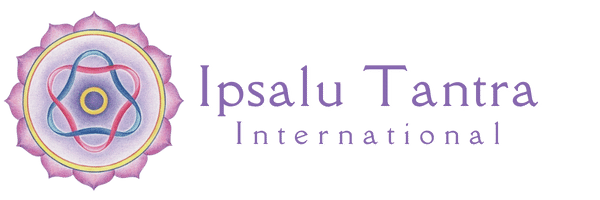“A rose is an opportunity for beauty to happen. The physical body is an opportunity for love to happen. Tantra is an opportunity for Godliness to manifest through us, so that we, as limited beings, can share in the ecstasy of the Universe”
Awakening the Cobra: The Birth of Tantra
Article by Meloney Hudson, Ipsalu Tantra teacher
Several millennia ago, spiritual adepts in the East, recognizing the dynamic energies of the universe and human body, identified sexual energy as a vehicle for enlightenment. Those of us raised in the puritanical Western churches probably see any kind of sexual ritual as the antithesis of religious enlightenment, but practitioners of the cult called Tantra that arose in Asia around 1,400 years ago discovered, refined, and disseminated practices with sexual energy as a path of spirituality through ecstasy.
The word Tantra comes from two Sanskrit words, “tanoti”, meaning “to expand,” and “trayati”, or “liberation.”1 Through the practices of Tantra, one’s awareness of the soul would expand, causing liberation from the confines of physical limitations. A path based on energy, Tantra is a practice in which sexual energy is generated and harnessed for purification of the energetic body. By merging feminine and masculine energies, either within one’s own body or by merging souls with a beloved partner of opposite energies (such as masculine and feminine), a pathway can be created through which energetic communion with the Higher Power could occur. Enlightenment and bliss are the rewards.
The Tantric Path
This path is not one of rote prayer or static meditations. It is a rich, active practice of sensual stimulation with music, art, movement, breath work, visualization, and the worship of the divine in others and the self. Tantra inspires a lifestyle that goes beyond form and integrates a spiritual practice fully into our entire being and daily experiences.
In the Western world today, Tantra has the reputation as being the “sex yoga,” but its value is not based on becoming a better sexual partner (although that can become a delicious side affect). Its value is using sexual energy to purify the energy body to become a conduit for higher, spiritual energy to attain enlightenment and supreme bliss. Tantra arose as a religious path around 600 AD as an offshoot of both Hindu and Buddhist paths, but scholars believe Tantric practices are much older, probably a secret, sacred art passed along orally from teacher to disciple. Archeological artifacts found in India dating back to 3000 BC provide evidence that Tantra and yoga were embraced by that culture.
Ancient Tantric Texts
Following ancient Hindu traditions, especially those recorded in the original Vedic texts, in which both goddesses and gods were revered for their mystical powers and influences over every aspect of life, Tantra practices reverence for both the feminine, Shakti, and the masculine, Shiva. Hindu texts called the Upanishads, written around 500 BC, reveal energy to be the essence of both human life and of spirit. The Hindu discovery of subtle energy and its attributes as a vehicle to enlightenment, indeed, expanded humankind’s perceptions of energy and humans as spiritual beings.
They created a system in which masculine and feminine energies were identified with philosophies and practices to use them for spiritual growth. The Upanishads brought the concept of chakras and human energy into human consciousness. The Upanishads aggrandize masculine energy with associations to the sun, illumination, immortality, and even the giver of life, whereas feminine energy is minimized and considered an obstacle to enlightenment.
The Movement of Tantra
In Asia, during the eighth through twelfth centuries AD, another spiritual philosophy emerged. Mahayana Buddhists developed philosophies of spirituality and enlightenment that included very little about energy, or even a god, instead proclaiming the route to enlightenment to be through individual meditation practices. Monasteries welcomed both women and men, and for the most part the path considered women and men equals in nearly every aspect, except in one regard. It was believed that women were incapable of attaining Buddhahood, the highest goal of Buddhism.
Over the centuries, as people crisscrossed Asia and shared their religious concepts, ideas about energy, masculine, feminine, God, and enlightenment merged. Tantra was an energetic response to the two highly masculine paths of Buddhism and Hinduism.
It wasn’t contained and taught only in monasteries, but was carried into villages and throughout the countryside by lay people and teachers, including women. Eventually Tantra established a foothold in the Indian subcontinent, in the Himalayas, and in East Asia and Southeast Asia.The Tantrics believed spirituality was attainable through family. Rather than shunning desire, passion, and ecstasy, as the Buddhist monks and nuns did, they embraced these things and asserted that enlightenment could be attained from Tantra.

The Divine Feminine and Divine Masculine
Unlike Buddhism, in which a male is iconic and in which it was impossible for females to attain Buddhahood, Tantra embraced both female and male as Buddha and placed an emphasis on the worship of female deities and the embodiment of female divinity. Tantric teachers and texts emphasized a reverence for women and taught that worshipping women was a form of devotion to the female deities. Goddesses were represented as powerful and spiritually independent, and great works of art depicted them as wrathful yet beautiful, demonstrating that there is “pure energy even at the heart of aggression.”
Tantric texts never demeaned women or made them inferior to men, as Hindu texts did, but rather held them in the highest esteem. In Tantric literature, men are portrayed as the supplicants and lovers of women. “A woman didn’t need approval to participate or advance in Tantric circles,” Shaw writes, “but a man’s progress was marked by his relationships with women.” In ritual, it is the woman who is adored as the goddess; she can propel the male partner to bliss and illumination.
Tantric masters refined Hindu concepts of masculine energy, Shiva, and feminine energy, Shakti, perceiving them to be equally powerful, and recognizing that all beings contain both energies within them. Only through entwining feminine and masculine energy—bringing heaven and earth together—can oneness of body and spirit be attained. The goal is to create a balance between the polarities of masculine and feminine energy and reach a place of androgyny.
Tantric methods are used to create the union of Shakti and Shiva, with the most important component being kundalini energy, which Tantrics believe is the most powerful energy in the body and the propeller of spiritual enlightenment. Originating in the kunda gland, located behind the sacral bone at the bottom of the spine, activated kundalini energy circulates up and down the channels of the spine and through each chakra. In Tantric tradition, kundalini energy is depicted as a snake, traditionally considered Shakti, or feminine energy, coiled at the base of the spine and in the sex organs. When kundalini is activated by sexual or Shakti energy, it uncoils and moves up the spine toward Shiva, the divine energy of the seventh chakra in the crown. Here, Shakti and Shiva unite. Kundalini then travels back down the spine, bringing Shiva down with Shakti. The joyous union of masculine and feminine energies inspires bliss and liberation.
Tantric ritual has always been an essential component of the spiritual experience. As Bodhi Avinasha states, “To expand consciousness, to liberate us from the physical level of our being, we use the five senses to their limit and go beyond that limit.” The various practices and rituals practiced by Tantrics awaken all of the senses, sparking joy and transporting us into states of bliss as we strive to attain a connection with the divine.
Tantric Tools
Mantras, mudras, prayers, meditation, and energy exercises purify the body and mind and encourage the rise of kundalini. In advanced circles, sexual ritual is performed by Tantrics who are proficient in energy exchange and transmutation. However, in many rituals sexual energy is engaged and exchanged with barely any physical contact.
Only in the early 20th century, in the work of Arthur Avalon (the pen name of Sir John Woodroffe, 1865–1936), did Tantra find its way to the Western world and into consciousness of spiritual seekers. Today, as we move into an area of planetary awakening, a growing number of people are adopting Tantra as a spiritual and conscious-awakening path. With its powerful practices and loving communities, experiences of energetic awakening, soul expansion and cosmic bliss can be had by all.
Resources: 1 Saraswati, Sunyata and Bodhi Avinasha. Jewel in the Lotus: The Tantric Path to Higher Consciousness. Third Edition. Ipsalu Publishing. 1994., p. 20.
2 Shaw, Miranda. Passionate Enlightenment: Women in Tantric Buddhism. Princeton University Press, 1994. p. 21. 3 Ibid., p. 21. 4 Ibid., p. 32. 5 Ibid., p. 28. 6 Ibid., p. 37.


